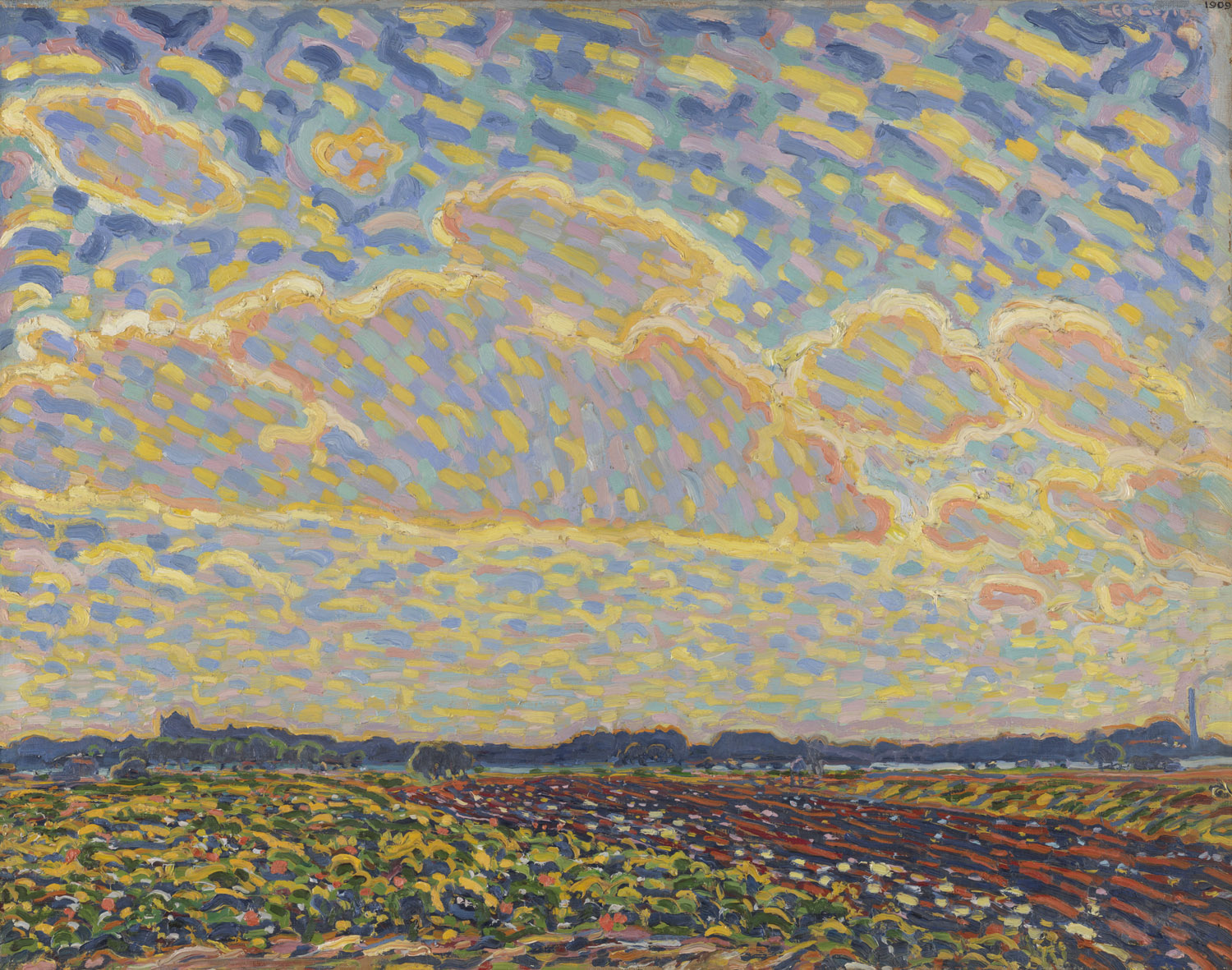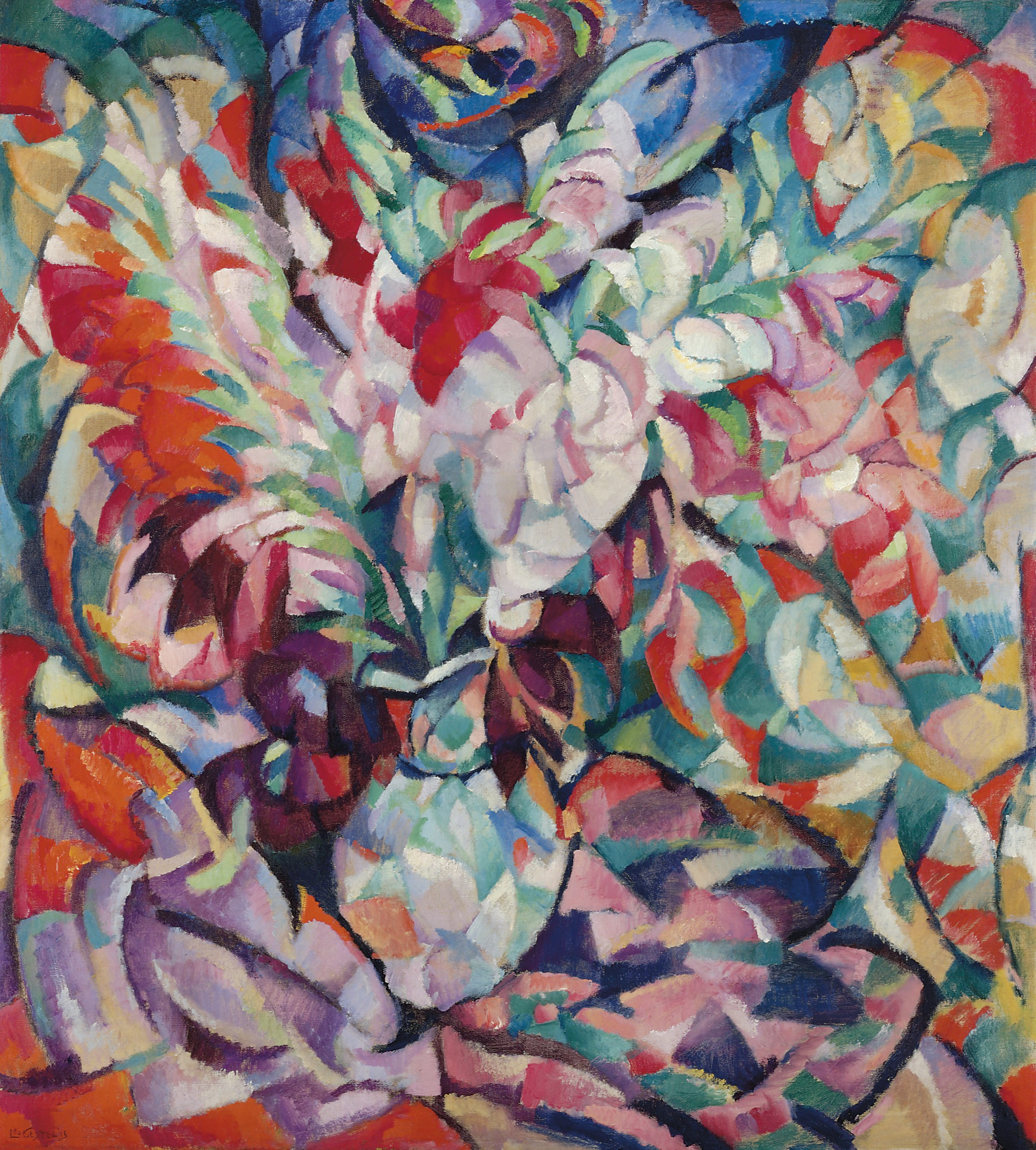The Dutch painter Leo Gestel initially made studies of light in interior settings, but in the summer of 1909 he moved outdoors. He painted along the rivers near Amsterdam and found lodgings in the rural districts around Nijmegen and Montfoort. Depicting the landscape allowed him to express himself more emphatically. Nature supplied him with many fascinating light effects: sunshine, moonlight, shadow, and mist. There he found an engaging motif, especially in combination with trees and clouds.
In earlier years, Gestel had painted landscapes mostly according to the Impressionist style. He was captivated by the impression of an image at a specific time of day, such as a landscape at sunset. Gestel painted the landscape around Montfoort repeatedly in 1909 "with constantly changing skies." Landscape near Montfoort is the most expressive of these, while the composition, with its low horizon, is still quite traditional. Here, however, he has rendered the scene in bright colors and with striking brushstrokes. Gestel regarded color as "the most powerful factor in the art of painting." This picture is perhaps one of the most extreme works from his early Luminist period with regard to coloration. He achieved a powerful look, perhaps by "putting pure color next to color: strong yellow and orange next to blue and purple." Here he applied the color theory of simultaneous contrast. Although not consistently placed side by side, the complementary colors orange and blue can be seen in the sky as well as yellow and violet. Red and green shimmer in the field below. The intense sky passage is built up of broad, sometimes impasto brushstrokes. These stand out sharply against the dark horizon, bathed in a sunny yellow and orange contour.
Gestel spent 1909 and 1910 trying to make his work more sensitive and "spiritual," and his color expression increased as a result. From 1911 on he developed a style with simplified forms that resulted in Cubism, although color was always an elementary factor. Gestel was one of the most important modern painters in the Netherlands during those years.
We present today's work thanks to the Kröller-Müller Museum. <3
P.S. Did you know that the Kröller-Müller Museum owns an impressive collection of modern Dutch art? Among them, the largest Van Gogh collection outside of Amsterdam! :O
P.P.S. We love such landscapes. I must confess that our DailyArt 2023 paper calendars (monthly and weekly) are full of such atmospheric works; don't miss them! :)


 Leo Gestel
Leo Gestel